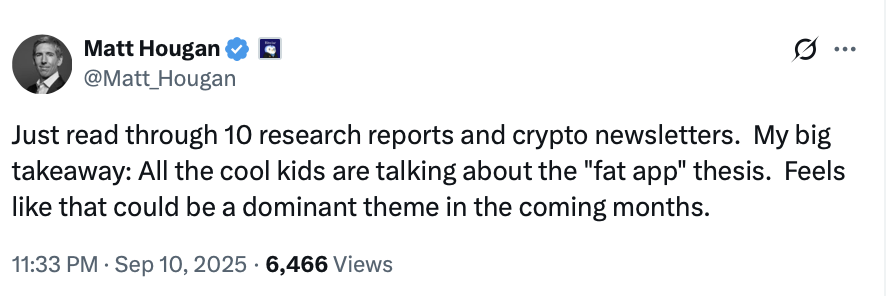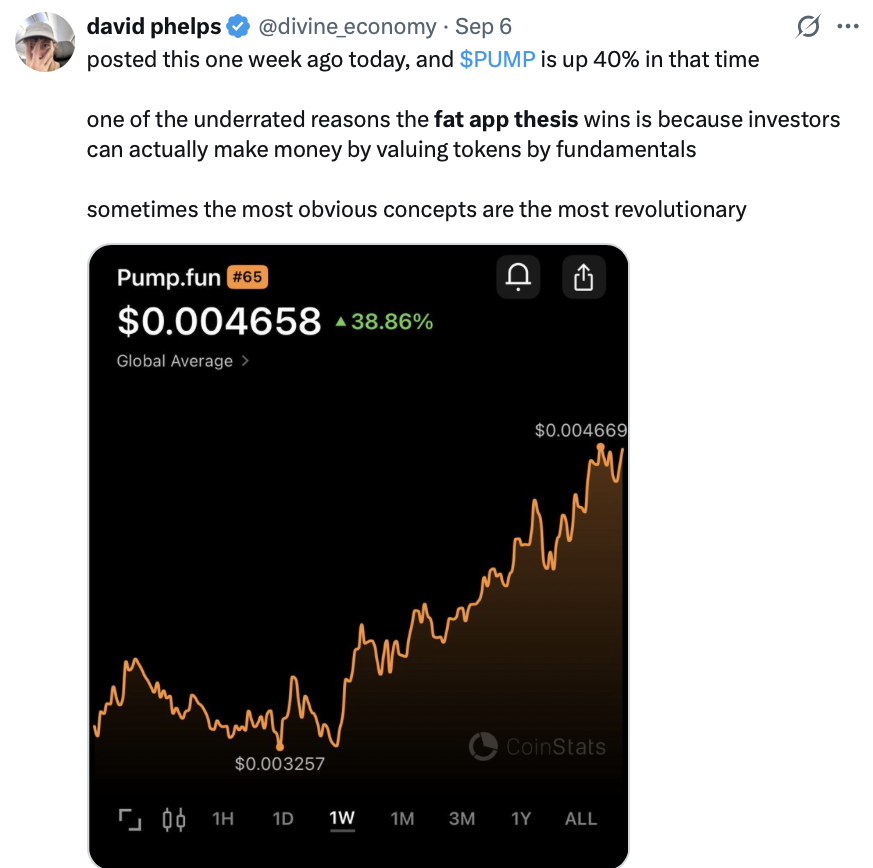The Fat App thesis argues that applications, not layer‑1 blockchains, will capture most crypto value; recent market data and Hyperliquid’s surge support this view, suggesting investors may increasingly favor application tokens over protocol tokens in the months ahead.
-
Applications may capture more value than base chains.
-
Market ratios show many layer‑1s underperforming application tokens.
-
Hyperliquid (HYPE) up 1,636% year‑over‑year, illustrating app-level demand.
Fat App thesis: applications—not blockchains—may capture most crypto value; read expert analysis, key data, and next‑step insights. Learn more now.
What is the Fat App thesis and why does it matter?
The Fat App thesis proposes that value in crypto ecosystems will concentrate at the application layer rather than at base layer blockchains. This view matters because it can change how investors allocate capital, shifting emphasis from L1 tokens to app tokens that show real user activity and token velocity.
How has recent market action supported the Fat App thesis?
Market data shows several core blockchain tokens trading sideways or losing ground versus Bitcoin while certain application tokens have posted outsized gains. For example, Hyperliquid (HYPE) has recorded dramatic price appreciation, evidence often cited by proponents that user-facing apps can drive token performance.

Source: Matt Hougan
How does the Fat App thesis differ from the Fat Protocol thesis?
The original Fat Protocol thesis argued that base layers (Ethereum, Solana, etc.) would capture most value. The Fat App thesis flips that premise, asserting that apps—through revenue, user flows, and token utility—will accrue the larger share of economic value over time.
This matters for valuation frameworks: investors who accept the Fat App view may prioritize app metrics like active users, transaction volumes, and token velocity over chain-level metrics.
What evidence do investors cite for an app-led rotation?
Institutional reports note the SOL/BTC ratio fell ~16.11% over 12 months (TradingView), while some application tokens have surged. Market commentary highlights token velocity, real usage metrics, and specialized demand as drivers of app token performance versus generalized blockspace demand.

Source: David Phelps
When might the Fat App thesis influence investor behavior?
Observers expect the narrative to gain broader attention within months as mainstream coverage and institutional reports emphasize app-level returns. If inflows continue toward high‑usage application tokens, portfolio allocations could shift meaningfully over a 3–12 month horizon.
Why do some experts push back on the Fat App narrative?
Critics say historical concentration of value in L1s may reflect index-like retail behavior, VC preferences for scale plays, or market structure quirks—not a settled structural outcome. Some executives caution that major L1s can still capture value indirectly through network effects and composability.
Frequently Asked Questions
Does the Fat App thesis mean layer‑1 tokens are obsolete?
No. The thesis suggests a rebalancing of value, not the elimination of L1 importance. Major layer‑1s may still underpin ecosystems and benefit from successful apps, even as app tokens capture a larger direct share of economic value.
How can investors evaluate app vs protocol opportunities?
Assess active users, token velocity, revenue capture, and on‑chain flows. Also compare protocol metrics like total value locked and developer activity. Use both quantitative data and project‑level fundamentals before reallocating capital.
Key Takeaways
- Market narrative shift: The Fat App thesis reframes where crypto value may concentrate.
- Data signals: Relative token performance and metrics like token velocity support app-led growth.
- Investor action: Evaluate apps on usage and revenue metrics; maintain exposure to resilient L1s.
How to assess app vs protocol investment opportunities?
Follow these steps to evaluate risk and potential:
- Measure active users and on‑chain flows for the app.
- Evaluate tokenomics: velocity, revenue capture, and utility.
- Compare protocol metrics: developer activity and composability benefits.
- Balance exposure: combine selected app tokens with top L1 holdings for diversification.
Conclusion
The Fat App thesis offers a compelling alternative to the Fat Protocol view, backed by recent token performance and standout app cases like Hyperliquid. Investors should watch user‑centric metrics and token velocity while keeping major layer‑1s in scope. Expect narrative shifts and allocation changes in the coming months.
Published by COINOTAG — Updated: 2025-09-11
